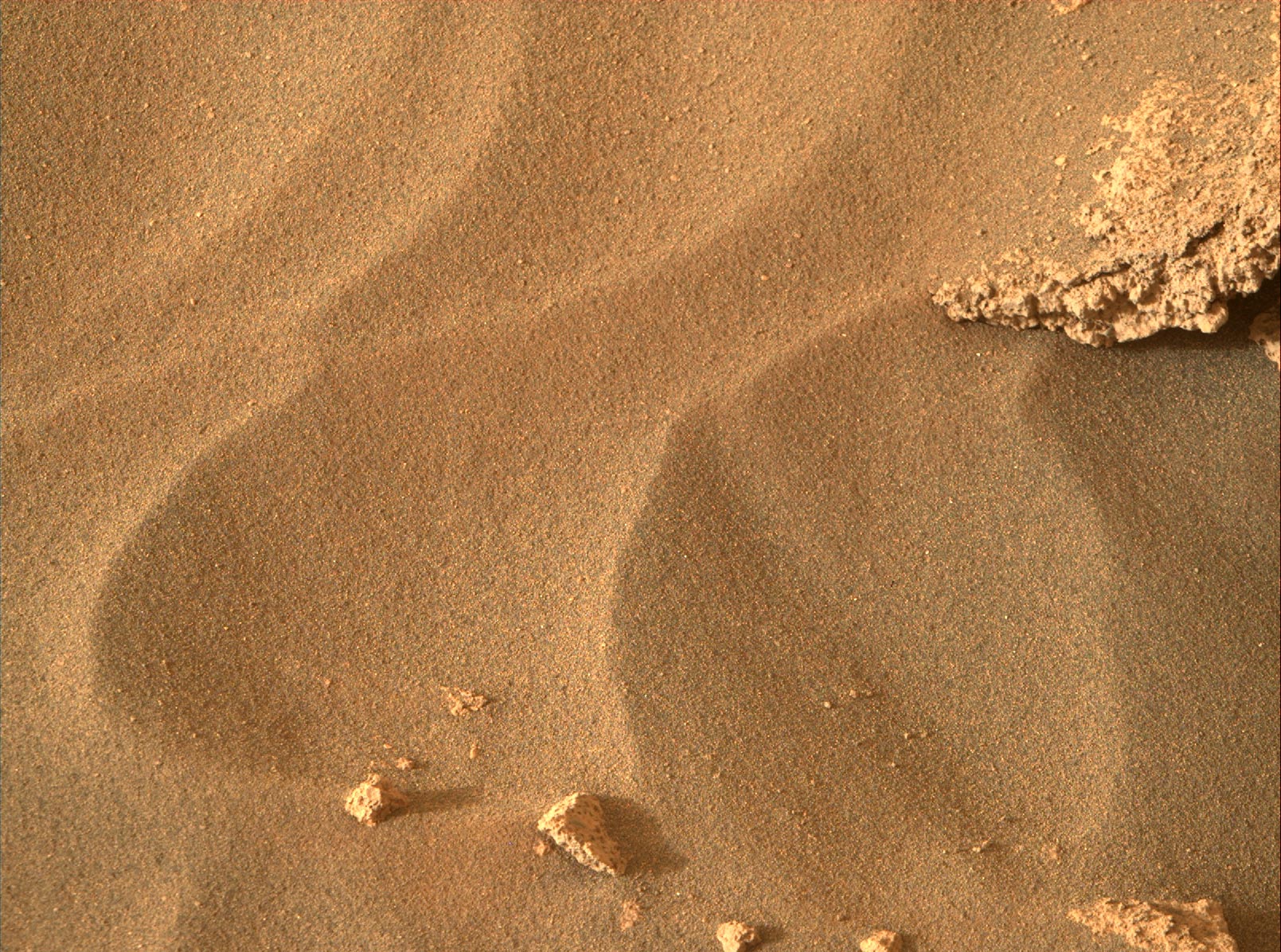

Mars Perseverance Sol 488 – Right Mastcam-Z Camera: Sand ripples imaged with Mastcam-Z on sol 488. These ripples will be reimaged for change detection while the rover is parked here at Skinner Ridge rock. Credit: NASA/JPL-Caltech/ASU
NASA’s Mars Perseverance Rover is currently stopped for sampling at Skinner Ridge rock. An important aspect of Perseverance’s mission is sampling activities, and therefore the rover’s strategic path is developed around sampling stops. During these stops, the rover must remain stationary for at least twelve sols (Mars-days) in order to conduct proximity science and activities related to abrasion and coring. However, there is another advantage to staying in one place for such a long time.
Sampling stops provide rare opportunities to perform “change detection” experiments, which are used to monitor aeolian — or wind-driven — transport of sand. The fundamental idea behind change detection is straightforward: to search for wind-induced movement of sand, compare identical images of the surface acquired at different times. The relative intensity and direction of the winds that were blowing in the interval between the two photos may be inferred from these observations. Sand deposits and aeolian bedforms (such as the sand ripples seen in the accompanying Mastcam-Z image at the top of this article) are ideal targets for change detection.
The Mars Perseverance rover is not the first spacecraft to perform this type of imaging experiment. In fact, change detection experiments have been conducted since the earliest missions sent to Mars, stretching back for many decades. Theories developed before robotic exploration predicted that contemporary Martian winds would rarely, if ever, be capable of transporting sand. Paradoxically, change detection images acquired from orbiting cameras have revealed the active migration of sand dunes across the planet.
Developing models that can effectively explain and predict aeolian activity on Mars is critical for interpreting the planet’s climatic and geologic history. It’s also essential for mitigating risks to landed spacecraft and future human explorers. Surface missions enable scientists to study ongoing aeolian activity in greater detail and with higher spatiotemporal resolution than can be achieved from orbit, which is necessary for reconciling the discrepancy between theory and observation. Sand motion has been observed and studied in situ at spacecraft landing sites, including Gale crater and Jezero crater. Images acquired during Perseverance’s ongoing activities at Skinner Ridge rock and at future sampling stops will be used to further characterize the aeolian environment in Jezero and will provide new insight into enigmatic Martian winds.
Written by Mariah Baker, Planetary Scientist at Smithsonian National Air & Space Museum